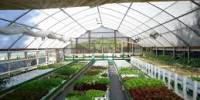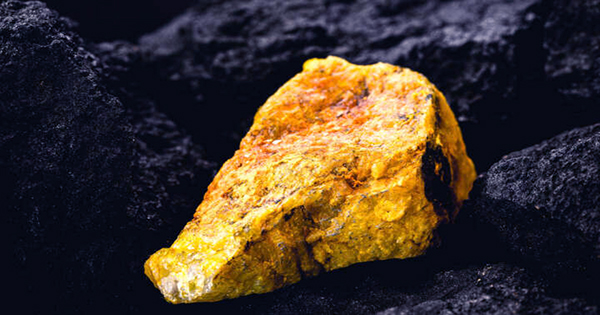Scientists have created a map that shows where the world’s primary food crops should be cultivated in order to maximize output while reducing the environmental effect. Large amounts of carbon would be captured, biodiversity would be increased, and agricultural fresh water consumption would be reduced to zero.
Around the cornbelt in the mid-western United States, and below the Sahara desert, the rebuilt world map of agriculture features substantial new growing areas for many main crops. In Europe and India, vast swaths of farmland would be returned to their original state.
By allowing land to revert to its natural, forested form, the proposal, which assumes high-input, mechanised farming, would reduce the carbon effect of global croplands by 71 percent. This is the equivalent of capturing our present net CO2 emissions for the next twenty years. Trees capture carbon as they grow, and they also allow the soil to absorb more carbon than when crops are grown in it.
Crop production’s impact on global biodiversity would be decreased by 87 percent in this optimized scenario. This would dramatically lower the chance of extinction for numerous species, many of which are threatened by agriculture. Croplands, according to the experts, would soon revert to their natural form, restoring their original carbon stocks and biodiversity in a matter of decades.
Growing crops in regions where rainfall provides all of the water they require would eliminate the need for irrigation entirely. Agriculture consumes around 70% of worldwide freshwater, resulting in drinking water shortages in many of the world’s drier regions.
The researchers examined global maps of the present growing areas of 25 major crops, such as wheat, barley, and soybean, which account for more than three-quarters of all cropland on the planet.
In many places, cropland has replaced natural habitat that contained a lot of carbon and biodiversity and crops don’t even grow very well there. If we let these places regenerate, and moved production to better suited areas, we would see environmental benefits very quickly.
Dr. Robert Beyer
They created a mathematical model to examine all of the options for distributing this acreage around the world while maintaining overall crop output levels. As a result, they were able to determine which alternative had the least negative influence on the environment.
The study is published today in the journal Nature Communications Earth & Environment.
“In many places, cropland has replaced natural habitat that contained a lot of carbon and biodiversity and crops don’t even grow very well there. If we let these places regenerate, and moved production to better suited areas, we would see environmental benefits very quickly,” said Dr. Robert Beyer, formerly a researcher in the University of Cambridge’s Department of Zoology, and first author of the study. Beyer is now based at the Potsdam Institute for Climate Impact Research (PIK), Germany.
Previous studies have identified priority sites for ecological restoration, but this is the first to map agricultural land relocation to maximize long-term environmental benefits without jeopardizing food security.
While a complete global agricultural relocation is clearly not a scenario that could currently be implemented, the scientists claim that their models identify areas where croplands are now underutilized but have the potential to be biodiversity and carbon storage hotspots.
Even if we took a more limited strategy, transferring croplands exclusively inside national borders rather than globally, we would still see considerable benefits: global carbon emissions would be cut by 59 percent, and biodiversity impacts would be decreased by 77 percent.
A third, more realistic option would be to relocate only the worst-offending 25% of croplands across the country, which would result in half the advantages of shifting all croplands ideally.
“It’s currently not realistic to implement this whole redesign. But even if we only relocated a fraction of the world’s cropland, focusing on the places that are least efficient for growing crops, the environmental benefits would be tremendous,” said Beyer.
Regardless of the exact ways in which the climate may change, the best distribution of croplands will change very little until the end of the century, according to the study.
“Optimal cropping locations are no moving target. Areas where environmental footprints would be low, and crop yields high, for the current climate will largely remain optimal in the future,” said Professor Andrea Manica at the University of Cambridge, senior author of the paper.
The researchers recognize that shifting crops must be done in a way that is both economically and socially acceptable to the individuals who will be affected. They use set-aside plans as an example, which pay farmers to retire a portion of their property for environmental reasons.
People may be enticed to farm in more suitable areas by financial incentives. Depending on how the land is farmed, the model created several global distribution maps, ranging from modern, fully mechanised production with high-yielding crop varieties and optimal fertiliser and pesticide use to traditional subsistence-based organic farming.
Even relocation of less intensive farming practices to better-suited locations would have a significant impact on carbon and biodiversity. While other studies demonstrate that shifting to a more plant-based diet might greatly lessen agriculture’s environmental impacts, the researchers claim that diets aren’t changing as quickly as they could.
Their model was based on the assumption that people’s diets would not change, and it aimed to produce the same food as we do now, but in a more efficient manner. Many of the world’s croplands are located in places where they have a considerable environmental footprint, having replaced carbon-rich and biodiversity-rich ecosystems and draining local water resources.
These areas were picked for historical reasons, such as closeness to human populations, but according to the researchers, it is now time to grow food in a more efficient manner.
















